Oscar Kelley is an 8.5-year-old Boxer who presented to the PVESC Surgical Service for an oral plasmacytoma. Oscar started with occasional bleeding from the mouth in August of 2024. Proliferative tissue biopsied by his regular vet was consistent with an oral plasmacytoma. He was referred to Dr. April Guille for further evaluation and treatment. A CT was performed, which showed a large soft tissue mass associated with gingiva of the left caudal maxillary premolar and molars (teeth 207-210) causing displacement and lysis of the bone. The mass was also associated with extensive regional osteolysis of the maxilla and extension involving the infraorbital canal, the maxillary recess, and portions of the zygomatic arch and orbital fossa. The CT of the chest showed an incidental pulmonary bulla.
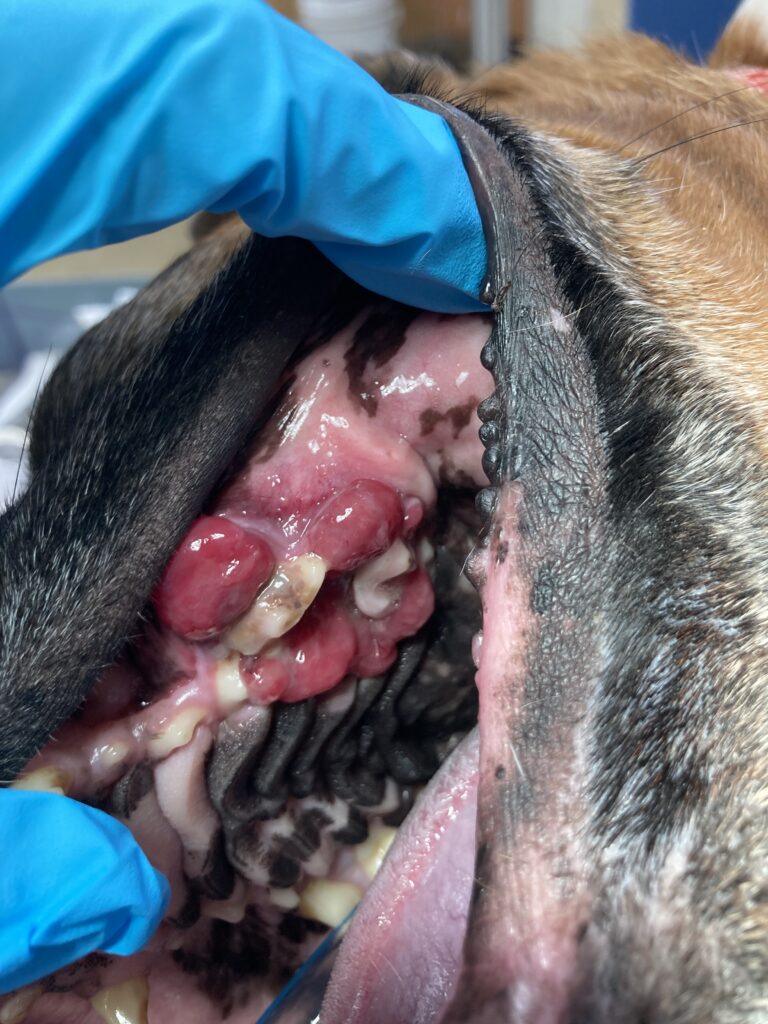
Figure 1: Mass on presentation 9/10
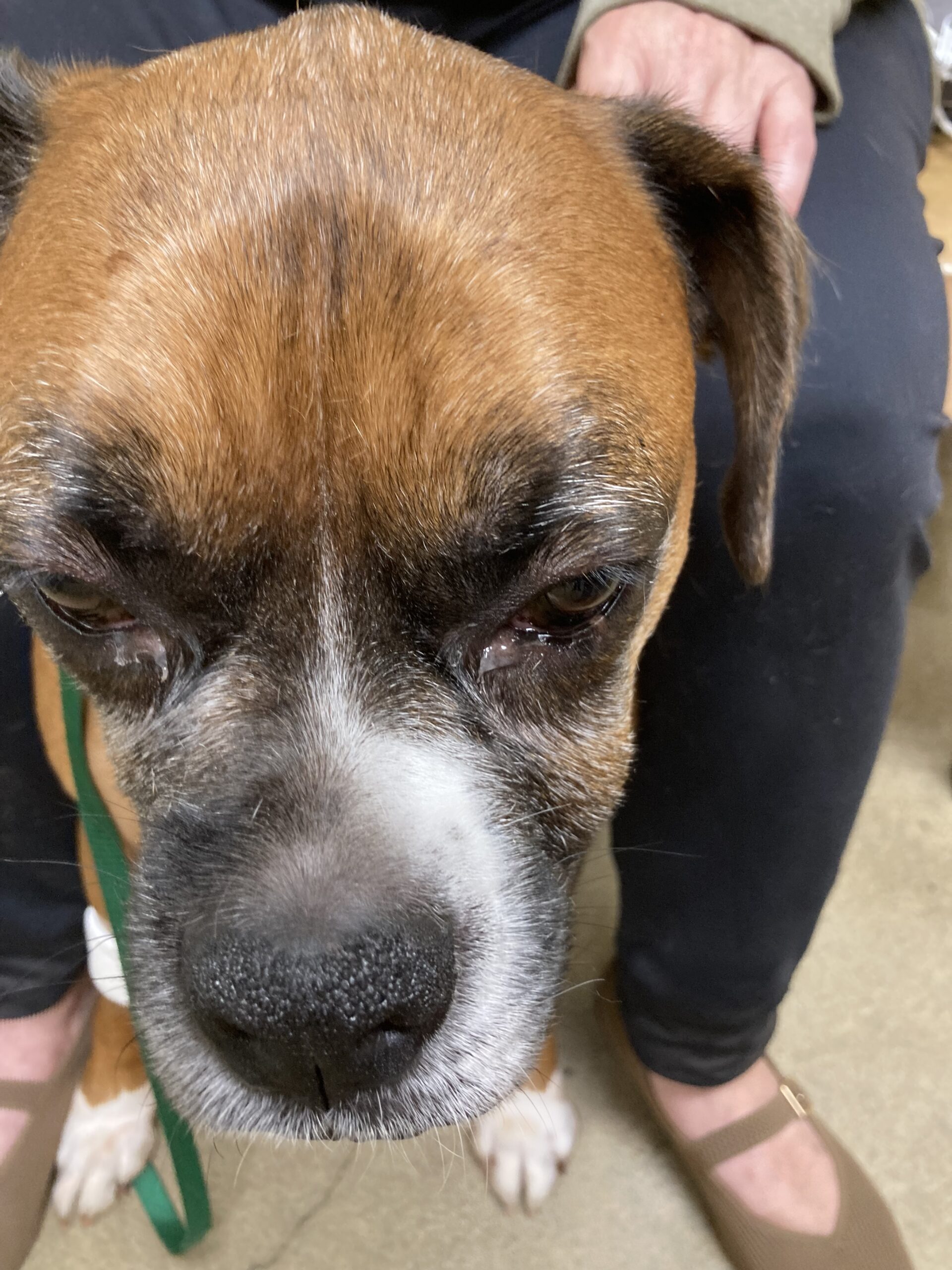
Figure 2: Appearance of facial swelling from mass at 9/10 consultation
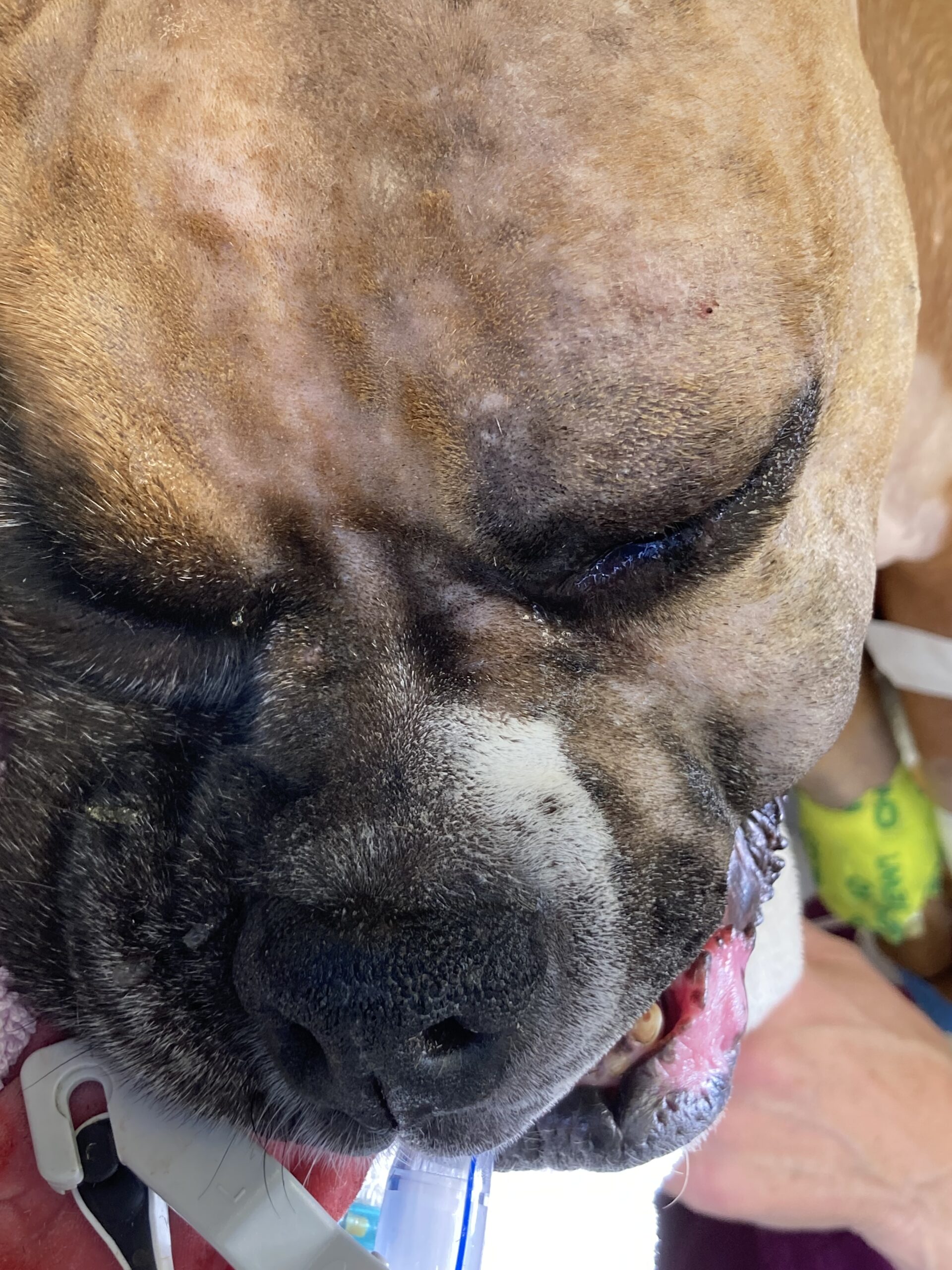
Figure 3: Appearance of facial swelling from mass at surgery one week later 9/17
Surgery was performed the following week. In that short time, the owner noted progressive growth of the mass. A caudal maxillectomy was performed via a modified combined dorsolateral and intraoral approach. The maxillary artery was preligated within the rostral orbit to reduce intra-operative hemorrhage. The mass extended into his zygomatic salivary gland, of which a portion was also removed. Oscar did well post-op and was released the following day. The biopsy results confirmed a plasmacytoma with a mitotic rate of 22.
Pertinent facts about oral plasmacytomas:
- Plasma cell tumors can be single (termed solitary osseous plasmacytoma [SOP] in bone, extramedullary plasmacytoma [EMP] in soft tissues) or diffuse (i.e., multiple myeloma)
- Plasma cell tumors arise from a monoclonal (occasionally biclonal) B-lymphocyte cell lineage
- In dogs and cats, cutaneous, oral, and colorectal EMPs are more likely to behave benignly compared to EMP arising at other sites.
- However, benign is a relative term in oral plasmacytomas. Although they may not spread as often as other tumors or as SOPs (with which close to 50% may progress to become multiple myeloma), they can behave quite aggressive locally with extensive bony lysis
- Extramedullary plasmacytomas (EMP) represented 5.2% of all oral tumors found in the dog
- Complete surgical resection may be curative
At his two week recheck, Oscar was doing really well. He healed completely with a small ulceration on his tongue from rubbing on the end of some suture. The suture was trimmed. Due to the extent of the disease, invasion into the salivary gland, and an incomplete palatal margin, melphalan and prednisone were started. Oscar just had his 4.5 month recheck and is doing great. The owner is thrilled that Oscar continues to do well and that his face looks normal. No one would ever know the extent of his surgery!
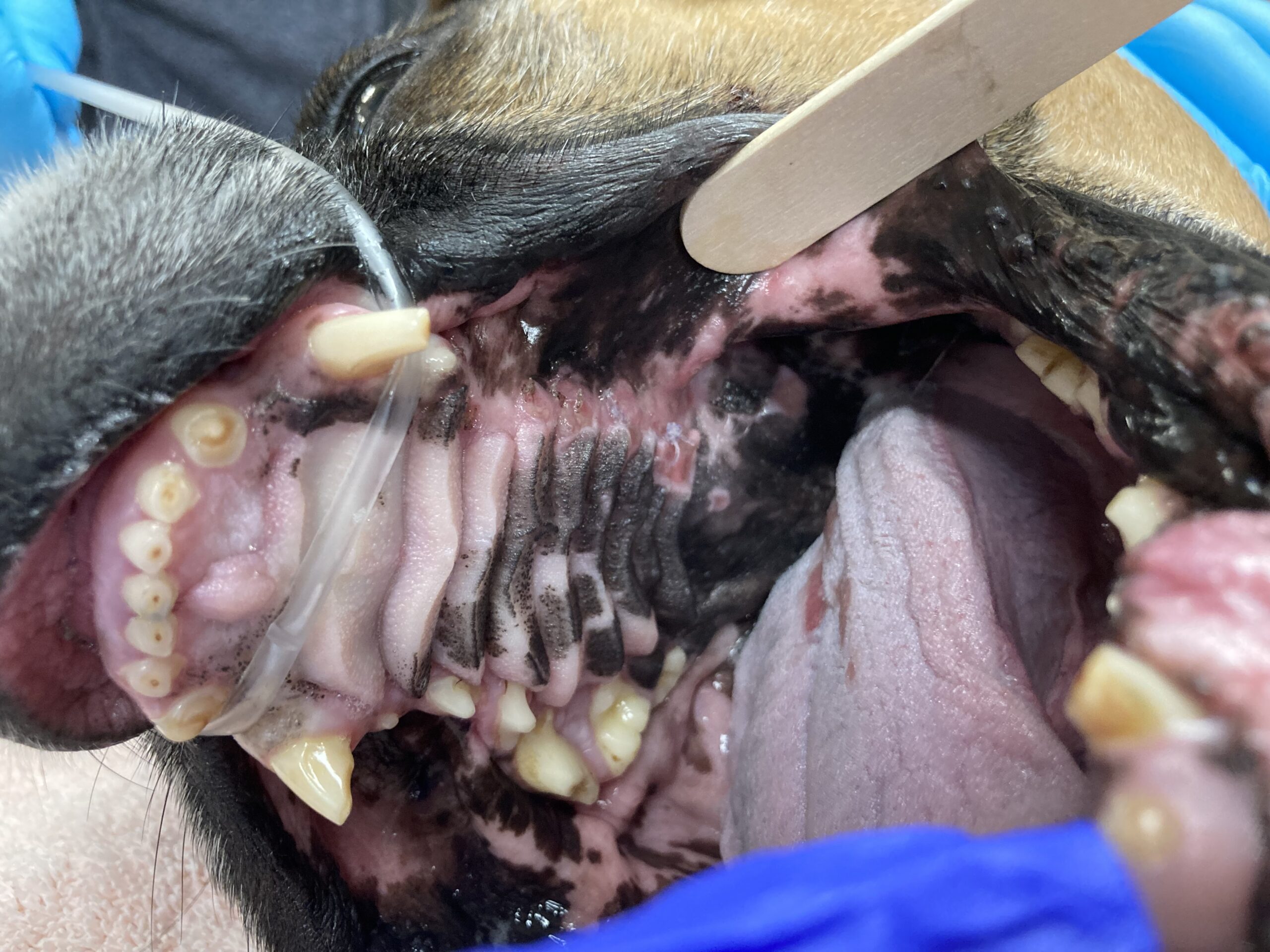
Figure 4: Healing at the two week recheck exam. There is a small ulceration on the tongue from suture material. The suture was trimmed flush.
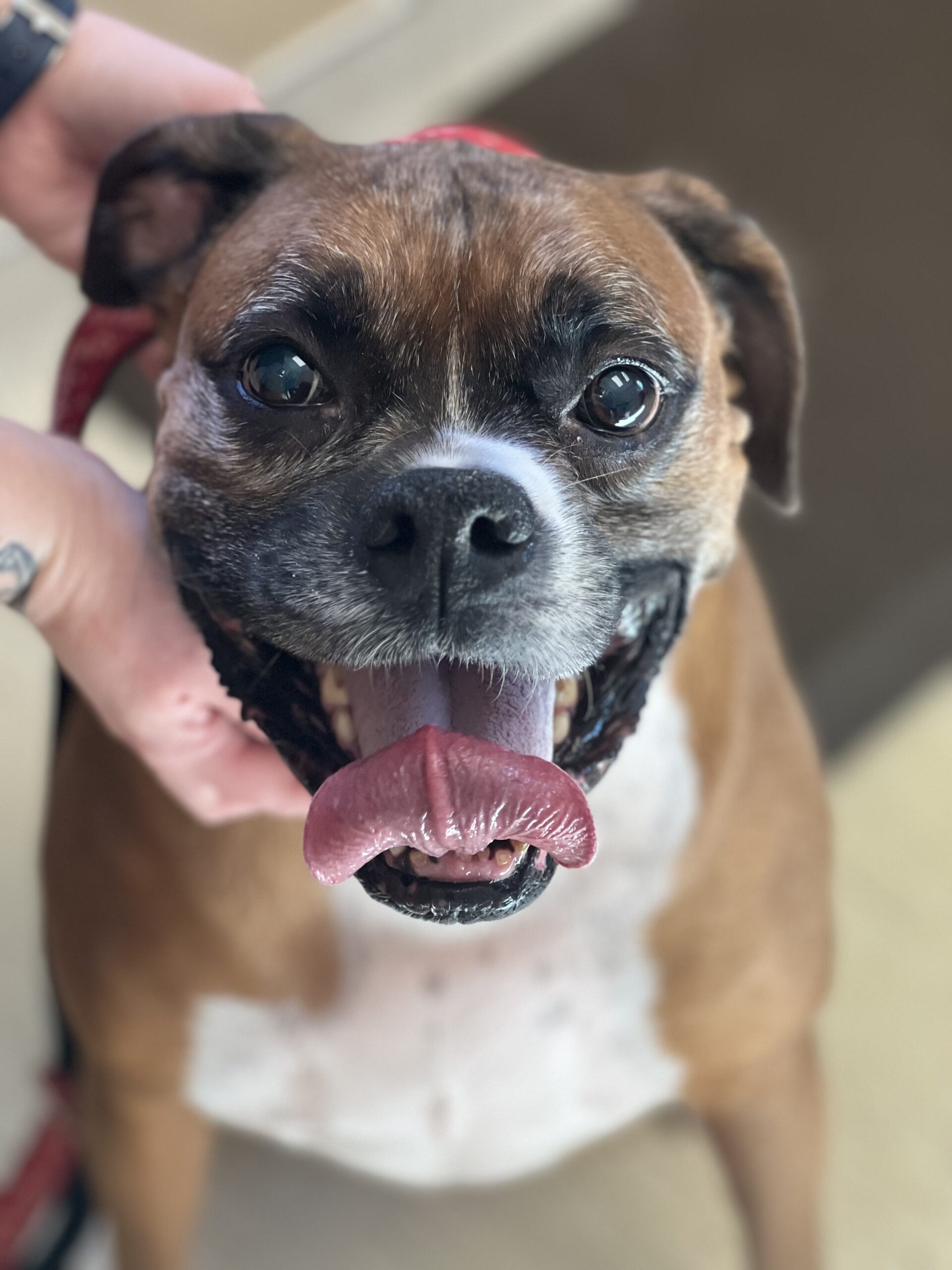
Figure 5: Appearance at his 4.5 month recheck

Figure 6: 4.5 months post-surgery
Authored by: April Guille, DVM, DACVS-SA (Surgery)